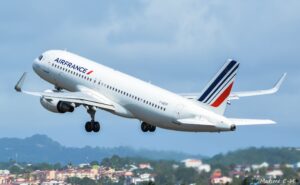Photography can hold time and add life to that paused moment with a flash. Hey, bird lovers and photographers, imagine two hummingbirds sitting on a
tree bark. It will be amazing, isn’t it? You might wish to capture their pecking, wing flapping, and tiny naughty eyes framed in colorful feathers. To your surprise, it is a challenge.
But why? The answer is that hummingbirds are the most active and challenging subject, even for experienced photographers.
If you want to capture their quick movements, multi-flash photography can be helpful. To ensure you get breathtaking shots of them, let us explore more about multi-flash bird photography techniques.
Understanding Multi-Flash Photography
Multi-flash photography involves using multiple flash units to illuminate a subject from different angles, effectively freezing its motion. This technique is especially useful for photographing fast-moving subjects like hummingbirds. The flashes provide even lighting, reduce shadows, and highlight details that are typically missed in natural light conditions. Understanding how to set up and synchronize these flashes is the first step toward mastering this technique.
Choosing the Right Equipment
To get started with multi-flash hummingbird photography, you’ll need the following equipment:
- Camera: A DSLR or mirrorless camera with manual settings.
- Lenses: A macro lens (100mm or 200mm) for close-up shots and a telephoto lens (300mm or more) for capturing hummingbirds from a distance.
- Flashes: At least three external flash units with adjustable power settings.
- Flash Triggers: Wireless triggers to synchronize the flashes with your camera.
- Tripods: Sturdy tripods for both your camera and flashes to ensure stability.
Setting Up the Scene
Location is crucial for hummingbird photography. Choose a spot where hummingbirds are known to frequent, such as a garden with plenty of flowers or a feeder. Position your camera and flash strategically around this area. Ensure the background is clean and uncluttered to keep the focus on the bird. Using natural elements like branches and flowers can enhance the composition and make the shots more appealing.
Configuring Your Camera Settings
Manual mode is essential for multi-flash photography. Set your camera to a high shutter speed (1/250s or faster) to freeze the motion of the hummingbird’s wings. Use a small aperture (f/16 or smaller) for a deeper depth of field, ensuring the entire bird is in focus. Adjust the ISO to the lowest possible setting to reduce noise, and use manual focus to pre-focus on the area where the hummingbird is likely to appear.
Positioning and Adjusting the Flashes
Place your flashes around the subject at different angles to create even lighting. One flash should be positioned above the subject, one to the side, and one behind, pointing towards the subject. Adjust the power settings of each flash to avoid overexposure and ensure balanced lighting. Use diffusers to soften the light and prevent harsh shadows.
Baiting and Attracting Hummingbirds
Hummingbirds are attracted to bright colors and nectar. Place feeders or brightly colored flowers near your setup to lure them in. Be patient and remain still to avoid startling the birds. Over time, they will become accustomed to your presence and the flashes.
Timing and Patience
Hummingbirds are most active during the early morning and late afternoon. Plan your shoots around these times for the best chances of success. Patience is key—these birds are unpredictable, and it may take several attempts to get the perfect shot. Stay focused and be prepared to shoot rapidly once a hummingbird enters the frame.
Post-Processing Tips
Even with the best setup, some post-processing will be necessary to enhance your images. Use software like Adobe Lightroom or Photoshop to adjust the exposure, contrast, and sharpness. Pay attention to the colors, ensuring they are vivid but natural. Cropping can also help improve the composition and remove any distracting elements.
Exploring Bird Photography Tours
For those looking to expand their skills and experience, bird photography tours offer an excellent opportunity. These tours are often led by experienced photographers who can provide valuable tips and insights. Additionally, they take you to prime locations where hummingbirds and other exotic birds are abundant, increasing your chances of capturing stunning images. Participating in such tours can also help you network with fellow enthusiasts and learn from their experiences.
Conclusion
Multi-flash hummingbird photography is a challenging but rewarding pursuit. By understanding the technique, investing in the right equipment, and practicing patience, you can capture incredible images of these mesmerizing creatures. Whether you’re shooting in your backyard or exploring exotic locations on a photography tour, the satisfaction of freezing a hummingbird in mid-flight and revealing its intricate beauty is unparalleled. Embrace the challenge, and let your passion for bird photography take flight.











